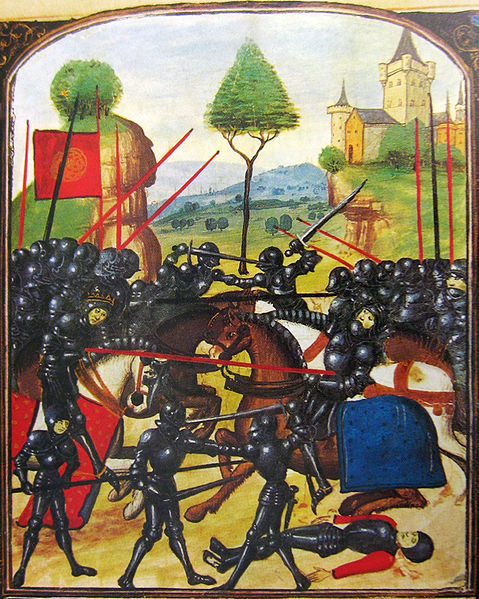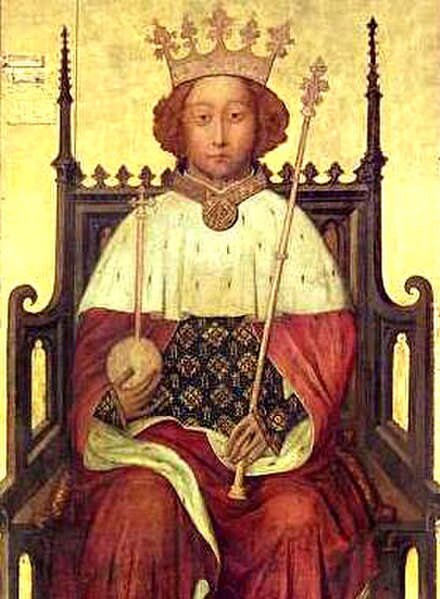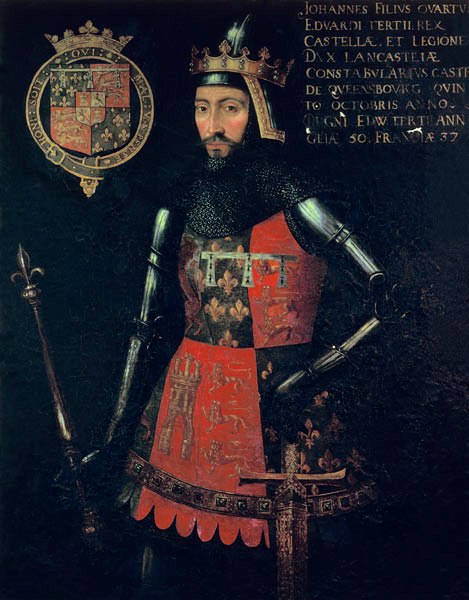The Battle of Barnet was a decisive engagement in the Wars of the Roses, a dynastic conflict of 15th-century England. The military action, along with the subsequent Battle of Tewkesbury, secured the throne for Edward IV.
Late 15th-century artistic portrayal of the battle: Edward IV (left), wearing a circlet and mounted on a horse, leads the Yorkist charge and pierces the Earl of Warwick (right) with his lance; in reality, Warwick was not killed by Edward.
The Earl of Warwick prepares for the battle in this diorama at Warwick Castle.
Nobles in the Battle of Barnet wore composite field armour like this suit exhibited at the Royal Armouries Museum.
1885 lithograph portraying the rout of Warwick's forces in the manner of Paolo Uccello
The Wars of the Roses, known at the time and in following centuries as the Civil Wars, were a series of civil wars fought over control of the English throne from 1455 to 1487. The wars were fought between supporters of the House of Lancaster and House of York, two rival cadet branches of the royal House of Plantagenet. The conflict resulted in the end of Lancaster's male line in 1471, enabling the Tudor family to inherit their claim to the throne through the female line. Conflict was largely brought to an end upon the union of the two houses through marriage, creating the Tudor dynasty that would subsequently rule England.
Miniature of the Battle of Tewkesbury, late 15th century
Edward III was the father of five dukes: Edward (Cornwall), Lionel (Clarence), John (Lancaster), Edmund (York), and Thomas (Gloucester).
Richard II was a child-king who succeeded his grandfather Edward III shortly after the death of his father, Edward the Black Prince.
John of Gaunt, founder of the House of Lancaster








